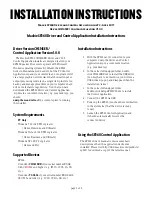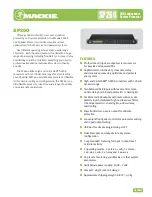
Appendix A
Specifications
©
National Instruments Corporation
A-7
Power-on state........................................ 0 V
Dynamic Characteristics
Settling time to full-scale range (FSR) .. 5 µs
Stability
Offset temperature coefficient ............... ±50 µV/
°
C
Gain temperature coefficient.................. ±30 ppm/
°
C
Explanation of Analog Output Specifications
Relative accuracy
in a D/A system is the same as nonlinearity because no
uncertainty is added due to code width. Unlike an ADC, every digital code
in a D/A system represents a specific analog value rather than a range of
values. The relative accuracy of the system is therefore limited to the
worst-case deviation from the ideal correspondence (a straight line), except
noise. If a D/A system has been calibrated perfectly, the relative accuracy
specification reflects its worst-case absolute error.
DNL in a D/A system is a measure of deviation of code width from 1 LSB.
In this case, code width is the difference between the analog values
produced by consecutive digital codes. A specification of ±1 LSB
differential nonlinearity ensures that the code width is always greater than
0 LSBs (guaranteeing monotonicity) and is always less than 2 LSBs.
Digital I/O
Number of channels ............................... 24 I/O (three 8-bit ports;
uses 82C55A PPI)
Compatibility ......................................... TTL
Digital logic levels
Level
Min
Max
Input low voltage
–0.3 V
0.8 V
Input high voltage
2.2 V
5.3 V
















































